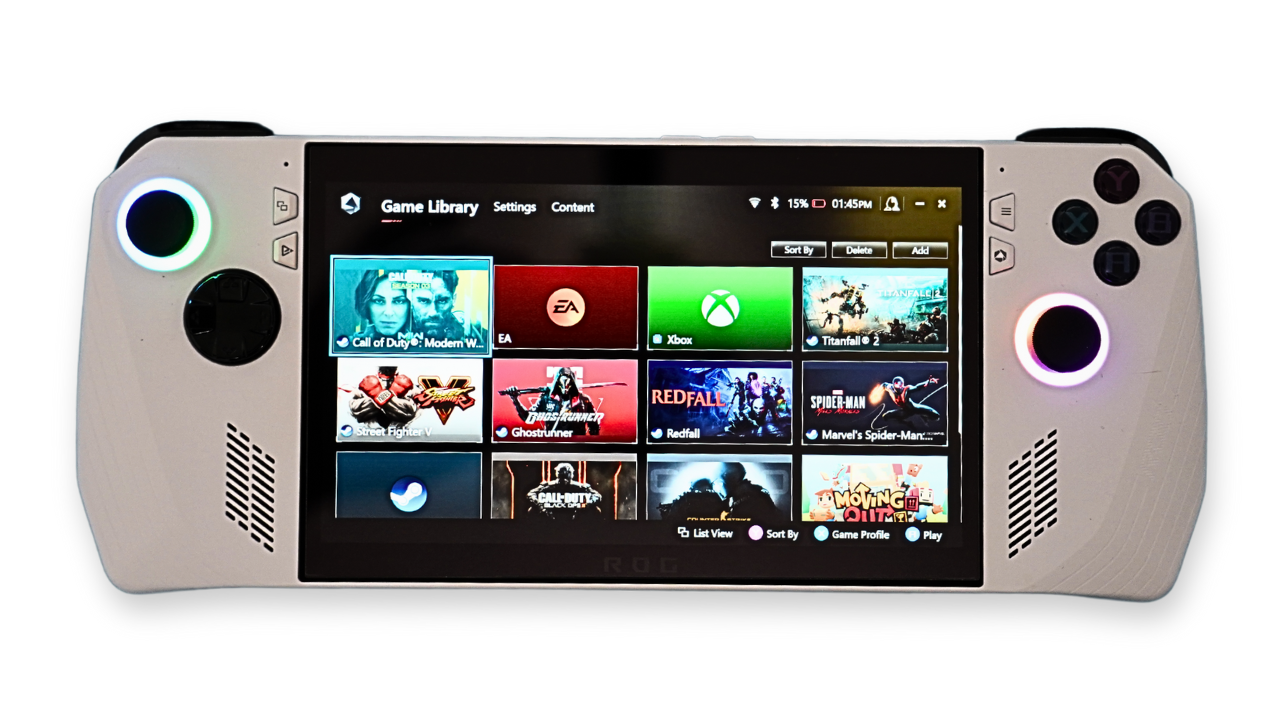I purchased the Asus ROG Ally on preorder and was excited to get it as an alternative to the Nintendo Switch and Steam Deck. I was looking forward to playing Windows games on a handheld device, but my real-world experience with it was a mix of good and bad.https://youtu.be/SmZ9OC2SnOM
Overview of the ROG Ally
The Asus ROG Ally is built on the Windows operating system. It features an AMD Ryzen Z1 Extreme processor, 16GB of RAM, and 512GB of storage. Weighing approximately 608 grams, it is lighter than the Steam Deck but heavier than the Nintendo Switch OLED, which weighs approximately 422 grams with Joy-Cons attached.
Design and Ergonomics
When I first picked it up, I immediately liked the ergonomics. It rested comfortably in my hands, allowing me to reach the joysticks, buttons, and D-Pad without changing my grip. Though it wasn’t as comfortable to hold as the Steam Deck, it wasn’t as large or modular as the Nintendo Switch, resting in a slightly better than mediocre middle ground.
Setup and Initial Impressions
When I turned it on, I learned my first lesson about the ROG Ally: it is primarily a handheld Windows PC and secondarily a handheld gaming device. The setup process was just like a standard Windows computer, requiring you to select your region, set up a Wi-Fi password, and choose your productivity apps. It was disappointing to see Windows productivity apps on what is supposed to be primarily a handheld gaming device.
Hardware and Display
The Ally features high-quality visuals on the go with its 7-inch Full HD touchscreen display, offering a smooth 120Hz refresh rate and AMD FreeSync™ Premium technology. This provides crisp and clear visuals while gaming. The virtual 5.1.2-channel surround sound powered by Dolby Atmos technology and dual front-firing Smart Amp speakers with Dolby Atmos immerse you directly in your games.
Software and Gaming Experience
You have the option to use the Asus Armory Crate software, which is just another program on the device. While it offers some gaming features, it seems secondary to the Windows operating system. This reliance on Windows can lead to issues such as frequent updates and inconsistent performance. For example, there was a period when Call of Duty wouldn’t work, and then suddenly it started working again. Similarly, you may encounter Windows Defender messages when trying to run games like Cyberpunk 2077.
Comparison with Other Handheld Gaming Devices
The Nintendo Switch’s software, codenamed Horizon, is proprietary and specifically designed by Nintendo for the Switch. The Steam Deck runs Steam OS, a Linux distro made specifically to run Steam, with built-in software called Proton that allows users to run Windows applications and games. Both Horizon and Steam OS are optimized specifically for their respective hardware, while the ROG Ally’s reliance on Windows may introduce additional complexity.
Conclusion
Overall, the ROG Ally offers some good features, such as its hardware and display quality, but the reliance on the Windows operating system creates some challenges and inconsistencies. Although it can be a great gaming device, the integration of productivity software and lack of optimization for handheld gaming may detract from the overall experience.
